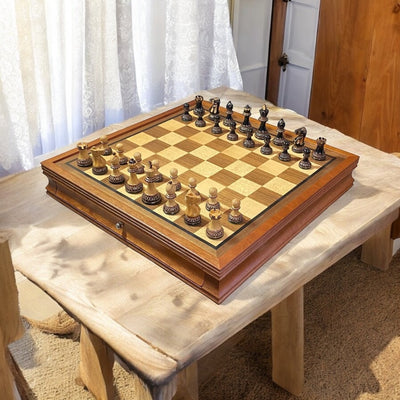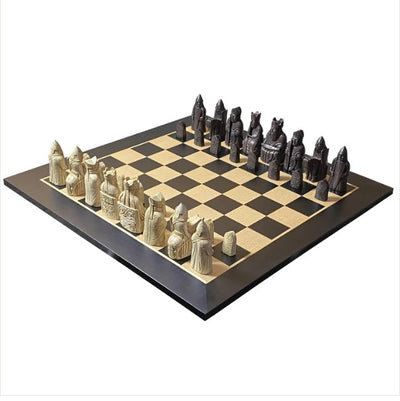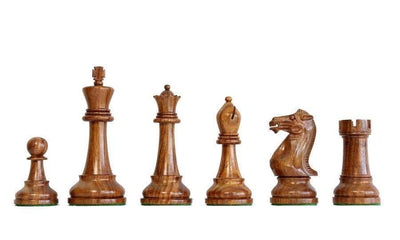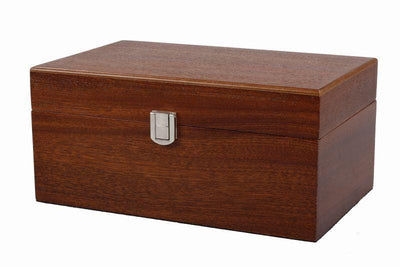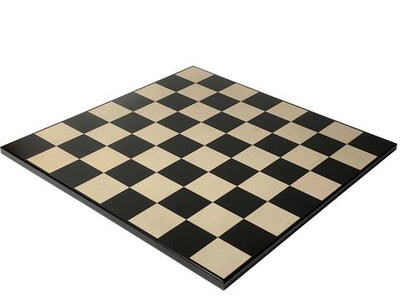Insufficient Mating Material
The Fédération Internationale des Laws of Chess says in article 9.6, "The game is tied when a position is stretched to a point from which a checkmate can't happen by any conceivable arrangement of legitimate moves, even with the most inept play. This quickly ends the game."
This is an exceptionally intriguing guideline, it can decide the after effect of a game in certain circumstances. We as a whole know, players concur in a draw when they can't mate one another, or frequently prior.
This standard says the game is drawn quickly if there is no real way to end the game in a mate. This is more unpredictable than we might suspect.
In time controlled games it is conceivable, that if the drawn position isn't remembered, one of the players comes up short on time and loses the game by time relinquish. Keep in mind, the game is drawn, however, the draw isn't perceived.
This article is devoted to outlining which circumstances are attracted and attempts to assist how with recognizing them. Additionally, we will unearth precedents for every one of the cases.
See the accompanying rundown and experience it up to the base to check which point coordinates the present setup.
Case 1:
The two sides have King
At the point when the two sides are left with no different chess pieces than the king, then this position is unmistakably drawn since no side can mate the other.
Case 2:
One side has:
King + Bishops
Could be a couple
Bishops (assuming more) remain on a similar colour
The opposite side has:
King
This position is likewise drawn since white can't mate dark and dark can't mate white. On the off chance that dark's king was in a corner white couldn't control every one of the four squares in that corner with his king and his one bishop, so mate is outlandish. Along these lines, the game is quickly drawn when a position like this happens.
This position is drawn as well as white can't mate dark even with at least two bishops if his bishops proceed onward a similar shading. White could win just on the off chance that he had bishops on various shading squares of the board.
Obviously, this is odd, white has elevated a pawn to a bishop rather than a queen that would have effectively won.
Case 3:
One side has:
King + Knight
The opposite side has:
King
This position ends in a draw since white can't control four squares in the corner or six squares at an edge, so can't mate dark. Also, obviously, dark can't mate white.
On the off chance that white had one more knight, the position would not be drawn, on the grounds, that mate is conceivable with two knights. That is known, mate can't be constrained with two knights, yet on the off chance that dark plays sufficiently awful, or takes suicide moves like aide the mate is conceivable. So a king and two knights against king position aren't drawn dependent on the deficient material guideline.
Case 4:
One side has:
King + Bishops
Could be a couple
Bishops (assuming more) remain on a similar shading
Rival has:
King + Bishops
Could be a couple
Bishop (or bishops assuming more) remain on a similar shading as bishop or bishops on the opposite side
This position is drawn, as no side can mate the other since every one of the bishops control similar shading squares. The quantity of bishops doesn't make a difference on the off chance that they are all on same shading squares of the board. In the event that white could take dark's bishops, or dark could take white's bishop, the circumstance would be the equivalent, and the game would stay drawn.
In the event that there was something like one bishop on an alternate shading, the game couldn't be ended in a draw, since mate is conceivable.
Case 5:
Any blend of pieces if there is no real way to stay away from stalemate
This setup is drawn in light of the fact that there is no real way to end the game in a mate. Dark can't stay away from white's stalemate, so the game would finish in a stalemate. White's last move was Qg7+. Dark currently would need to take the white queen to escape from check either by Kxg7, Rxg7 or Nxg7 and from that point forward, the outcome would be a stalemate, so the game can't finish in a mate. This is the reason the game is attracted to this situation as per the standard at the highest point of this page.
This is a genuine guide to demonstrate how white can spare a half point from a lost position. Dark has an enormous material favourable position, and could without much of a stretch win if white didn't move Qg7+. With this move, the game is drawn, paying little mind to how solid black is.
With black to move, this is only a guide to demonstrate how vital is to perceive approaching stalemate in time. This position is attracted by the standard, directly after white had moved Qg4+. There is just a single move grouping in this position and it prompts stalemate. In this manner, the game is drawn since none of the players can mate one another.
On the off chance that the game hadn't finished in a draw as the standard says, the move succession would be Rxg4+, Rxg4+, Qxg4+ then Nxg4, when it would be a stalemate. It's difficult to stay away from stalemate, so the game can't finish in a mate. Along these lines, this position likewise coordinates the standard, so the game is promptly drawn after Qg4+.
Case 6:
Any combination of pieces on the off chance that it is difficult to achieve mate, since pieces are blocked and cannot be liberated, or the free pieces can't mate the adversary's king.
This model demonstrates a setup where there is sufficient mating material, however, mate is as yet outlandish. The two sides are unfit to free their powers since they can't achieve the rival's pawns. All the mating pieces are blocked, just the kings could move until the finish of the Time. So the game is drawn promptly when a position like this happens. These positions are the supposed dead positions.
Case 7:
Any mix of pieces if there is no real way to stay away from one of the above circumstances to occur.
With white to move, this setup is likewise attracted promptly as per the standard after dark's turn. It was Ra8+. White can't move whatever else, yet catch the dark rook by Kxa8. After Kxa8 the setup would be drawn. In this way, in this position, it's difficult to evade the drawn position. Subsequently, there is no real way to end the game in either side's mate and the game is drawn just after dark's Ra8+.
In any other case, you can unquestionably checkmate your opponent provided you remain vibrant and vigilant. The Staunton Chess Set is known for its one of a kind style and guidelines related to it. The material used to make these chess pieces fluctuate from wood, ivory, metal, glass, stone to plastic. Chessmaze International chess Company includes an immense gathering of top-notch chess boards. As a Company with class and an eye for detail and interesting styles, it has a select distributorship of wonderful wooden chess sheets, from the esteemed eminent craftsmen of Sorrento Italy, Giglio Asla. These Italian chess boards are cautiously made to enjoy the players in the soul of the game with each move and each touch. These Italian extravagance chess sheets as an ideal match of style, for any chess piece.


